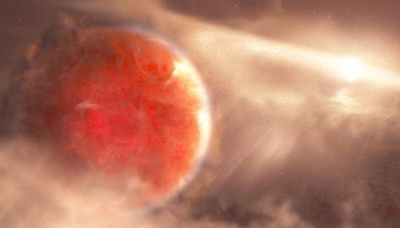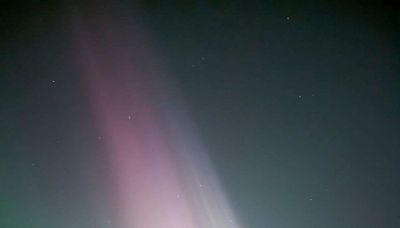Search results
The Solar System is the gravitationally bound system of the Sun and the objects that orbit it. It was formed 4.6 billion years ago when a dense region of a molecular cloud collapsed, forming the Sun and a protoplanetary disc.
Solar System Overview. The solar system has one star, eight planets, five dwarf planets, at least 290 moons, more than 1.3 million asteroids, and about 3,900 comets. It is located in an outer spiral arm of the Milky Way galaxy called the Orion Arm, or Orion Spur.
4 days ago · What is the solar system? What are the planets in the solar system? Where is the solar system? How did the solar system form? Is there life in the solar system aside from on Earth?
The 9 Planets in Our Solar System. Mercury. The smallest and fastest planet, Mercury is the closest planet to the Sun and whips around it every 88 Earth days. Mercury facts →. Venus. Spinning in the opposite direction to most planets, Venus is the hottest planet, and one of the brightest objects in the sky. Venus facts →. Earth.
10 Things. Our solar system is made up of a star, eight planets, and countless smaller bodies such as dwarf planets, asteroids, and comets. Our solar system orbits the center of the Milky Way galaxy at about 515,000 mph (828,000 kph). We’re in one of the galaxy’s four spiral arms.
Mar 27, 2019 · March 27, 2019. • 5 min read. The universe is filled with billions of star systems. Located inside galaxies, these cosmic arrangements are made up of at least one star and all the objects that...
Mar 29, 2023 · Types of planets in the solar system. Solar system FAQs. What is a planet? The sun. Mercury. Venus. Earth. Mars. The asteroid belt. Jupiter. Saturn. Uranus. Neptune. Trans-Neptunian region....
Our solar system consists of our star, the Sun, and everything bound to it by gravity – the planets Mercury, Venus, Earth, Mars, Jupiter, Saturn, Uranus, and Neptune; dwarf planets such as Pluto; dozens of moons; and millions of asteroids, comets, and meteoroids.
The solar system has eight planets: Mercury, Venus, Earth, Mars, Jupiter, Saturn, Uranus, and Neptune. There are five officially recognized dwarf planets in our solar system: Ceres, Pluto, Haumea, Makemake, and Eris. The inner, rocky planets are Mercury , Venus , Earth, and Mars.
Feb 25, 2022 · The solar system is a collection of planets, moons, asteroids, comets, dust and gas that orbit our local star, the sun. It includes the rocky inner planets Mercury, Venus, Earth and Mars; the gas...






